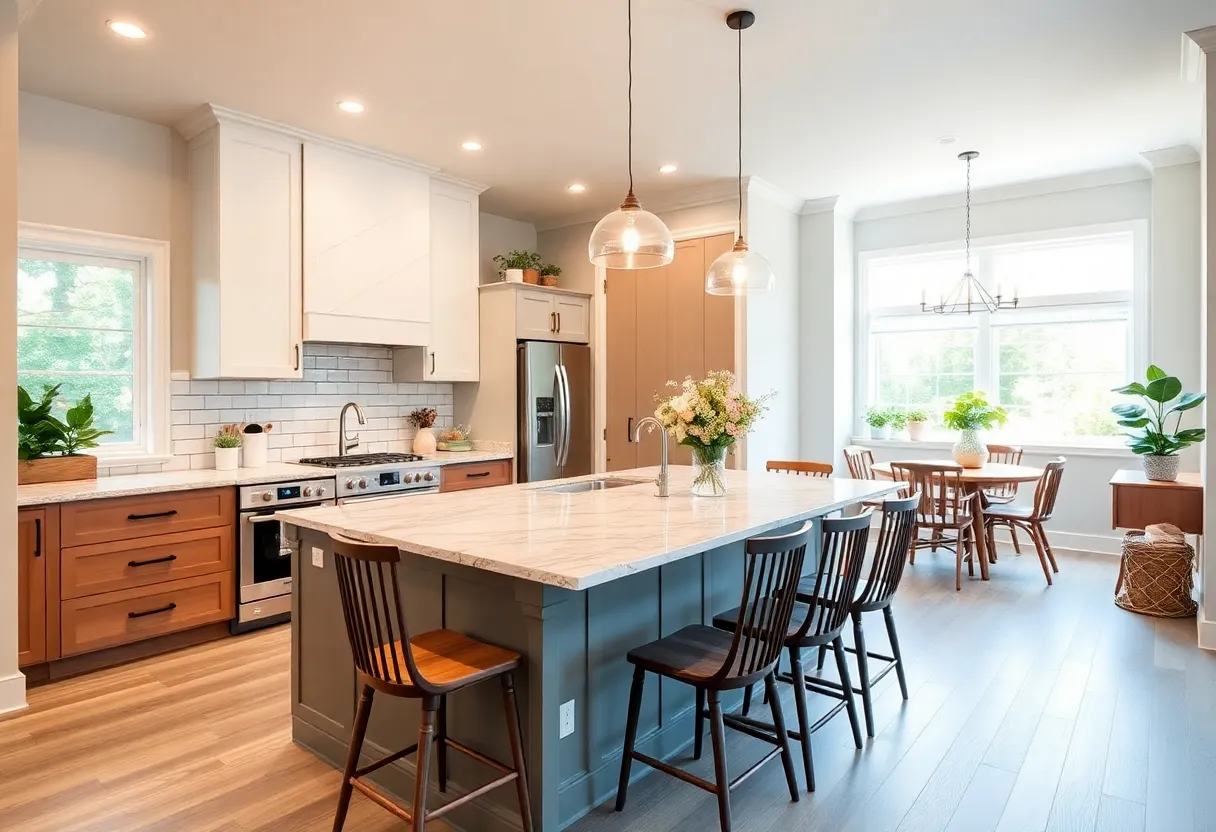How to Remodel a Kitchen: A Comprehensive Guide to Planning and Execution
Remodeling a kitchen can be a daunting yet rewarding process. It not only enhances the appearance and functionality of one of the most important rooms in a home but can also increase property value. This comprehensive guide outlines the essential steps and considerations involved in how to remodel a kitchen effectively.
1. Establish Your Goals
Before diving into your remodel, take time to define your primary goals. What are you hoping to achieve? Common objectives include:
- Improved Functionality: Enhancing the layout and flow of the kitchen to support cooking and entertaining.
- Upgraded Aesthetics: Giving the kitchen a fresh, modern look.
- Increased Storage: Adding cabinets or shelves to accommodate kitchen tools and supplies.
- Energy Efficiency: Installing energy-saving appliances to reduce utility bills.
2. Set a Budget
A clear budget is critical for any remodeling project. Consider all associated costs including materials, labor, and permits. It is advisable to:
- Research Costs: Gather estimates for appliances, countertops, flooring, lighting, and other materials.
- Include a Contingency: Set aside approximately 10-15% of your budget for unforeseen expenses.
3. Design Your Dream Kitchen
3.1. Layout Considerations
The kitchen layout profoundly affects both function and flow. Popular layouts include:
- U-Shaped: Ideal for larger spaces, providing ample counter area.
- L-Shaped: Efficient and versatile, suitable for smaller kitchens.
- Galley: Incredibly functional for narrow spaces.
3.2. Style and Aesthetic
Choose a design style that complements your home. Some popular styles include:
- Modern: Focused on simplicity and clean lines.
- Traditional: Timeless elements with classic details.
- Industrial: Raw materials and bare structures for a trendy look.
3.3. Color Scheme
Colors can dramatically affect the mood and size perception of your kitchen. Light colors can make the space seem larger, while bold colors can create a vibrant atmosphere.
4. Hire Professionals or DIY
Decide whether to manage the remodeling yourself or hire professionals. Considerations include:
- Experience: Assess your own skills and comfort with renovations.
- Time: DIY can be time-consuming; hiring professionals may expedite the process.
- Quality of Work: Professionals often achieve a higher standard, especially for complex tasks like plumbing and electrical work.
5. Obtain Permits
Before starting construction, check with local regulations. Certain remodels may require permits. Verify:
- Building Codes: Ensure compliance with local safety standards.
- Inspection Requirements: Scheduled inspections may be necessary at various stages of the remodel.
6. Demolition and Removal
Once you have all approvals, it’s time to start demolition. Focus on safety:
- Turn Off Utilities: Ensure gas, water, and electricity are turned off before removing fixtures.
- Protect Surrounding Areas: Use drop cloths to protect floors and furniture from dust and debris.
7. Execution of the Remodel
7.1. Structural Changes
If making significant changes, such as moving walls or reconfiguring plumbing layouts, complete these first. This sets a solid foundation for all subsequent work.
7.2. Electrical and Plumbing
Installing new lighting, outlets, and appliances requires careful electrical work. Similarly, updating plumbing is crucial for sinks and dishwashers. Use professionals unless you have ample experience and knowledge in these areas.
7.3. Install Cabinets and Countertops
Once the structural work is complete, begin installing cabinets and countertops. Pay attention to:
- Alignment: Ensure cabinets are level and properly secure.
- Material Choices: Consider durability and maintenance when selecting surfaces.
7.4. Flooring Installation
Choose flooring materials that blend style with functionality. Options include:
- Tile: Durable and available in many designs.
- Hardwood: Offers warmth and classic appeal.
- Vinyl: Affordable and easy to install with a variety of textures.
7.5. Finishing Touches
These are vital for achieving the complete look. This stage includes:
- Painting: Choose colors that enhance the overall style.
- Lighting Fixtures: Install ambient and task lighting for functionality and aesthetic appeal.
- Hardware: Selecting knobs and pulls for cabinets and drawers can provide an important finishing touch.
8. Final Inspection and Cleanup
Before fully utilizing your new kitchen, conduct a thorough inspection to ensure everything functions as intended. Check for:
- Functional Appliances: Ensure all appliances are operational and free of defects.
- Water Leaks: Inspect all plumbing connections for leaks or issues.
9. Enjoy Your New Kitchen
Once the chaos of remodeling settles, take time to enjoy your new kitchen. Evaluate how the changes you made improve functionality, aesthetics, and your overall cooking experience. It’s also a perfect opportunity to host a gathering and showcase your new space.
Conclusion
Remodeling a kitchen is a significant endeavor that requires careful planning and execution. By clearly defining your goals, setting a budget, and taking a methodical approach, you can transform your kitchen into a space that better meets your needs while adding value to your home. Whether you choose to DIY or hire professionals, understanding how to remodel a kitchen will ensure that your project is successful and satisfying.








